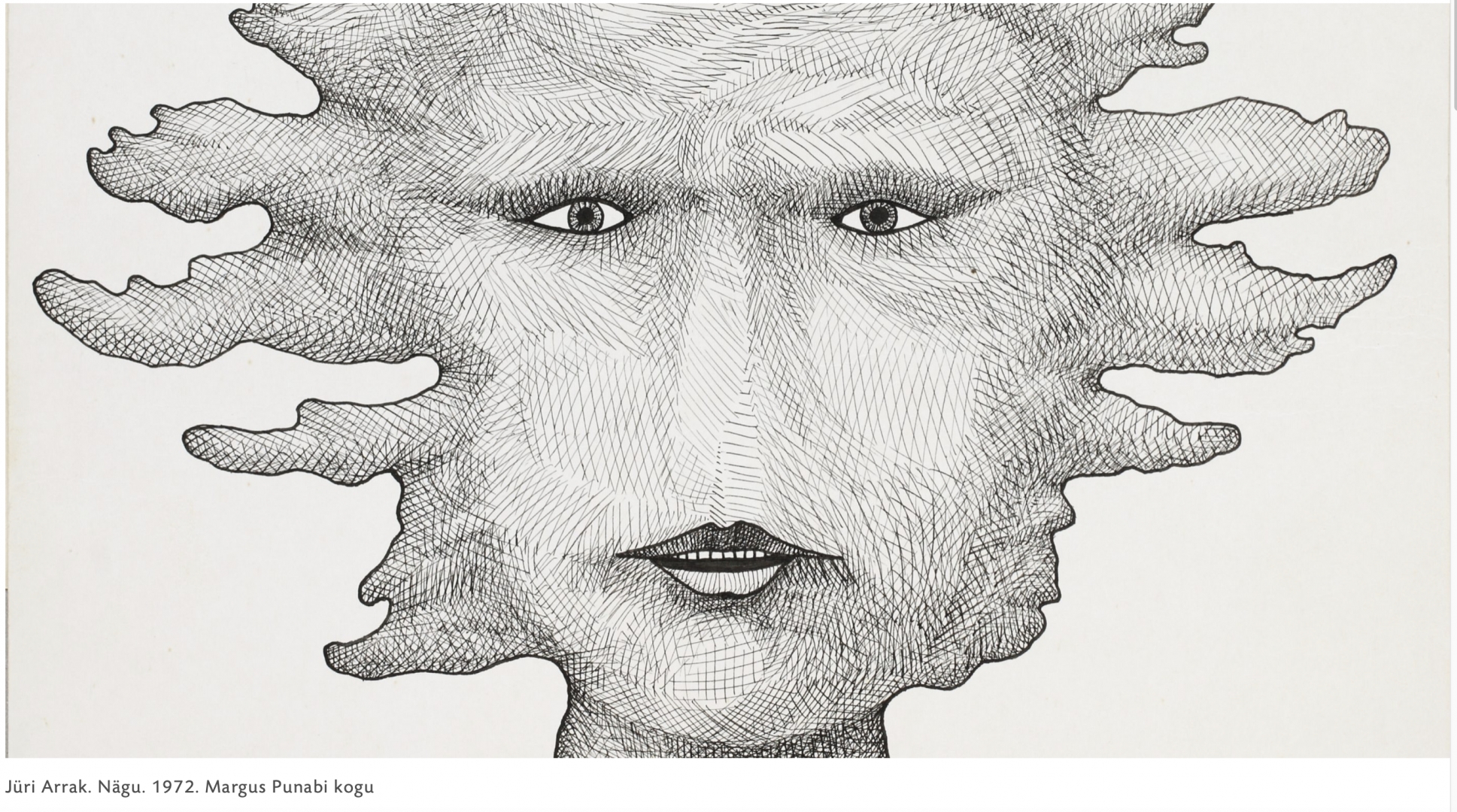Having studied metal art at the State Art Institute of the Estonian SSR, Arrak was a self-taught painter, thus maintaining independence from the local painting conventions. Perhaps that is why it is impossible to confuse his work with that of his contemporaries. Arrak’s background in metalwork gave him the courage to take a decorative approach to painting, which he combined with his innate figurative way of thinking and his limitless imagination, which, in his own words, sprang from his difficult childhood and tumultuous youth.
The first decade of Arrak’s creative career was characterised by multidirectional experiments with forms. The artist’s stylistic reference points were abstract art, surrealism and nouveau réalisme, although he avoided getting stuck in any of these artistic movements. A sudden change in his art occurred in 1970, when, in preparation for his first solo exhibition, the artist developed his trademark style, with its “exploding heads” and winding contours. The bright colours and flat images typical of Arrak’s work in the first half of the 1970s have led to loose parallels being drawn with the aesthetic of Pop Art. Conditionally, Arrak’s youthful period can be dated as having ended in 1976, when the artist read the entire Bible for the first time and painted his first large-scale works in the style of the Old Masters.
Arrak’s pictures are intrinsically narrative. In the centre of occasionally anecdotal images, we find unusual situations that seem to want to be read as narratives. What is it about these picture stories that captivates the viewer? One thing is certainly curiosity: a person’s inherent need to know another. Everything that an artist depicts also reveals something about him- or herself. In Arrak’s case this seems to be truer than for many others. He has said that it was the first turbulent 22 or 23 years of his life that made him the artist he is.
Nature has blessed me with an associative way of thinking, so I can make something new and different out of almost anything. You can be talented, but if your talents are tied in a knot…
The exhibited works come from the collections of Andres Eilart, Pekka Erelt, Reigo Kuivjõgi, Kalle Laasberg, Sven Pertens and Margus Punab. All of these works feature the fantastic form language that dates back to the stormy creative period of Arrak’s youth, which artistically sensitive collectors have acquired in various ways, for different reasons and principles of choice, and which thereby create a kind of spiritual portrait of each of the collectors.
Exhibition curators: Aleksander Metsamärt and Tõnis Tatar
Exhibition design: Peeter Laurits
Graphic design: Külli Kaats




